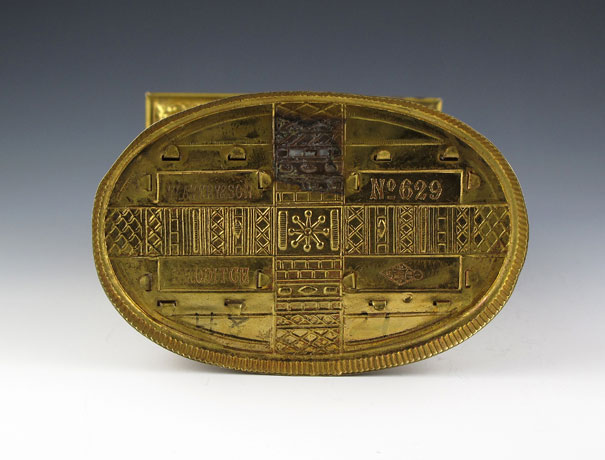Arc de Triomphe

Needle Case

Design Representation
Design Details
Needle Case Type: |
Figural |
Patent/Registered to: |
W. Avery & Son - Redditch |
Patent/Design Representation #: |
Ornamental Class 1: Metal: #333761 (Provisional Design #1599 registered December 19, 1878) |
Patent/Design Registration Date: |
March 27, 1879
|
Location of Patent/Design Registration: |
The National Archives (TNA) - Kew, UK |
Reference #:
|
TNA Representation - BT 43/45/333761
TNA Register - BT 44/4/333761 |
Dimensions: |
7.5 x 4.9 x 7.4 |
Material: |
Brass |
Name Variations: |
W. Avery & Son - Redditch |
Other Variations: |
None |
Additional Photographs


Front and side views


Top closed and open


Bottom and signature detail
Facts
The Arc de Triomphe is one of the top tourist attractions in Paris, France. The monument is 164 feet tall (50 meters),
148 feet wide (45 meters) and 72 feet deep (22 meters). It contains a viewing platform, reached by climbing 234 steps,
which provides wonderful views of the city. Until 1982 it was the largest triumphal arch in existence.

History
The Arc de Triomphe was commissioned by Napoleon in 1806; however it wasn’t completed until 1836. As seen in the
monument’s original design sketch below, it was designed in the neo-classical style and is based on the famous Arch of Titus in Rome,
Italy. The arch honors those who fought and died for France during the French Revolution and Napoleonic Wars. The
Tomb of the Unknown Soldier was added under the arch in 1920 as a tribute to those who died in World War I.

Location
The Arc de Triomphe monument is located in the middle of the Place Charles de Gaulle. Twelve streets, including the
famous Champs-Elyséess, radiate from this circular square on the right bank of the Seine River. Because of traffic
congestion in the area, visitors must use an underground passageway to visit the arch.
















